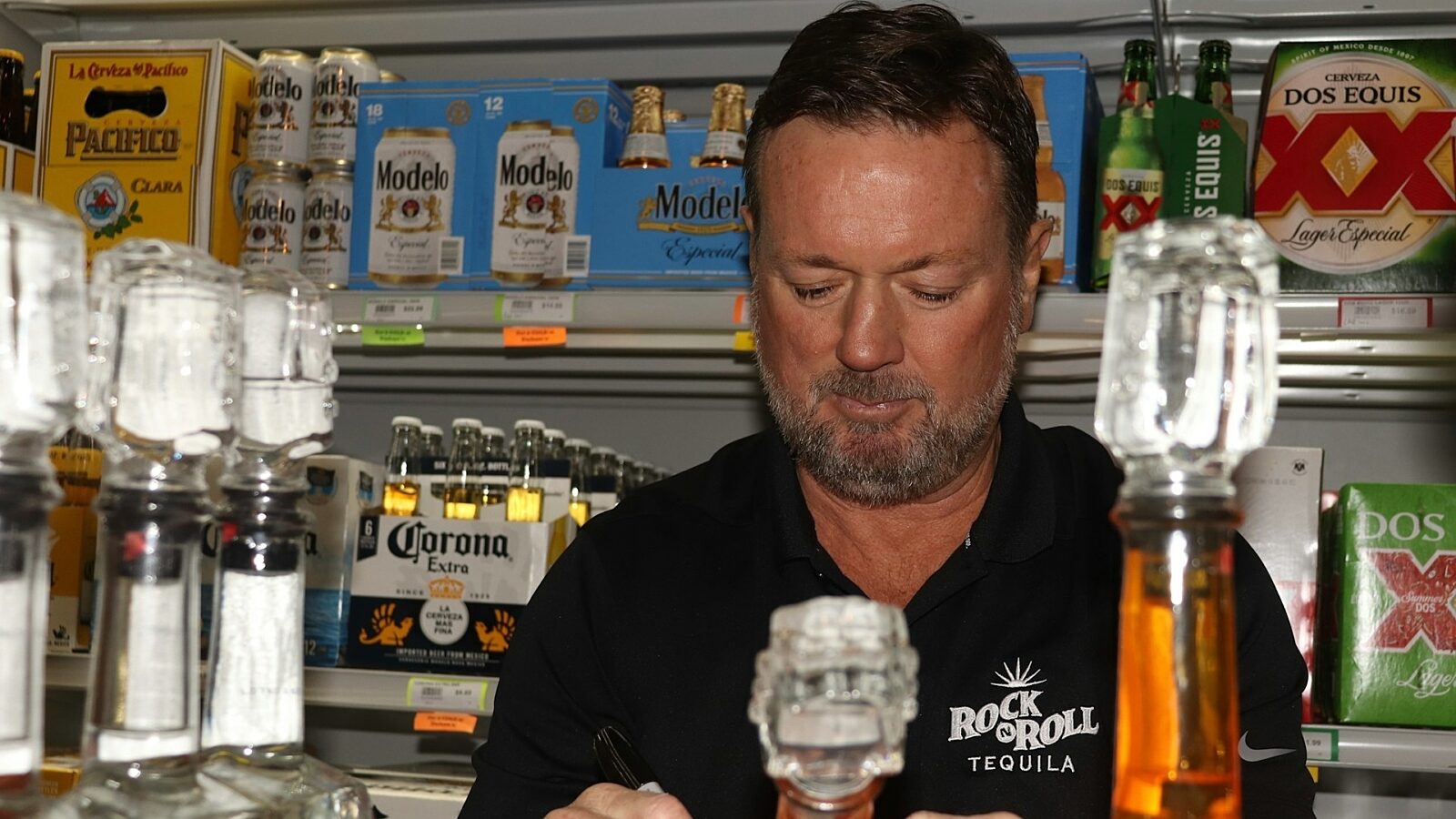
Liquor Store Delivery: How To Set Up Delivery For Your Liquor Store
This guide will offer valuable insights to help your liquor store enter the world of delivery and thrive.

Tessa ZuluagaAuthor
What happens when you're hosting a party and right before your guests arrive you realize you’re running low on blanco tequila? You’ve already broken into the chardonnay, so driving to your local store is out of the question. The solution here is liquor delivery.
Retail has undergone a dramatic transformation, with delivery services becoming increasingly popular across various industries. The liquor store sector is no exception to this trend, as consumers now expect the convenience of having their favorite wine & spirits, mixers, and hard seltzers delivered right to their doorstep. In fact, according to a 2023 Alcohol Online Ordering Trends report, one in ten consumers in the U.S. has ordered alcohol delivery in the past six months. For liquor store owners, it’s important to adapt to this new reality to stay competitive.
Whether you're considering launching a delivery service for the first time or looking to optimize your existing operations, this guide will offer valuable insights to help your liquor store thrive. Let’s get into it.
Why liquor stores should offer delivery
Changing consumer behaviors
The average delivery service customer spent $407 a month in 2023, up from $157 a month in 2021, according to a recent survey from LendingTree.
Today's customers value convenience and immediacy, often preferring to shop from the comfort of their homes. This shift has been further accelerated by the global COVID-19 pandemic, which has made many consumers more reliant on delivery services for their everyday needs, including alcoholic beverages.
Competitive advantage
In an increasingly crowded market, offering delivery services can set your liquor store apart from competitors who haven't yet embraced this model. By providing the convenience of home delivery, you can attract new customers who prioritize ease of purchase and retain existing customers who might otherwise be tempted by online-only retailers or convenience stores that deliver on popular apps.
For example, Uber Eats now offers liquor, grocery store, and convenience store delivery, which has helped them become the most popular food delivery service with 88 million users.
Increased revenue
Implementing a delivery service opens up new revenue streams for your liquor store. It allows you to reach customers beyond your immediate geographic area, tap into the growing market of online shoppers, and potentially increase average order values.
Many customers are willing to pay a premium for the convenience of delivery, which can boost your profit margins. In fact, in a recent Toast survey, 47% of respondents said they’re willing to pay $3-$6 in delivery fees.
How to deliver alcohol legally
Age verification
One of the most critical aspects of alcohol delivery is ensuring that you're not selling to minors. Implement a robust age verification system that requires customers to provide proof of age both when ordering online and upon delivery. Check out G2’s Best Identity Verification Software article to brainstorm ideas.
It’s also essential to train your delivery staff to properly check IDs and refuse delivery if there's any doubt about the recipient's age.
Licensing requirements
Before launching a delivery service, research and obtain all necessary licenses and permits required by your state and local authorities. For example, to get a license for alcohol delivery in California, you need to apply to the California Department of Alcoholic Beverage Control (ABC) and meet specific requirements.
Many jurisdictions require specific off-premises or delivery licenses in addition to your standard liquor license. Failure to comply with these requirements can result in severe penalties, including the loss of your liquor license.
How to set up internal delivery operations
Staffing and training
If you choose to manage deliveries in-house, you'll need to hire and train dedicated delivery staff. Look for employees who are reliable, customer-oriented, and capable of handling the physical demands of the job. Provide comprehensive training on age verification procedures, safe driving practices, and how to handle customer interactions professionally.
Vehicle and equipment requirements
Invest in appropriate vehicles for your delivery service. Depending on your volume and delivery area, this could range from bicycles for local deliveries to cars or vans for wider coverage. For example, if your store is located in New York City, you can hire drivers on bikes who can still make reasonable delivery times. Whereas, if you’re located in a town in Tennessee, where bike routes aren’t as common, delivery drivers might need a car.
Ensure all vehicles are properly insured and equipped with necessary items such as coolers or temperature-controlled compartments to maintain product quality during transit.
Order management systems
Implement a robust order management system to streamline the delivery process. This should include a user-friendly online ordering platform for customers, as well as backend software that helps you track orders, manage inventory, and coordinate deliveries efficiently. Many point-of-sale (POS) systems now offer integrated e-commerce and delivery management features tailored specifically for liquor stores.
Inventory management
Effective inventory management becomes even more crucial when offering delivery services. Ensure your system accurately reflects real-time stock levels to prevent overselling. Consider dedicating a portion of your inventory specifically for delivery orders to maintain a balance between in-store and online sales.
How to outsource delivery services
Third-party delivery platforms
Partnering with established third-party delivery platforms like DoorDash, Uber Eats, or Instacart can provide a quick way to start offering delivery without significant upfront investment. These platforms handle the logistics of checkout and delivery and often bring their own customer base, potentially increasing your visibility.
Alcohol delivery services
Consider partnering with specialized alcohol delivery services such as Drizly or Minibar. These platforms cater specifically to the liquor industry and may offer more tailored solutions for age verification and compliance with alcohol-specific regulations.
Pros and cons of outsourcing
Pros:
- Reduced upfront costs and logistical challenges
- Access to established delivery infrastructure and customer bases
- Ability to scale quickly during peak periods
Cons:
- Less control over the customer experience
- Higher fees, cutting into profit margins
- Possible limitations on branding and direct customer relationships
How to market your delivery service
Online Presence and SEO
Optimize your website and online listings for local search terms related to alcohol delivery. Ensure your site is mobile-friendly and clearly communicates your delivery offerings, including service area, fees, and minimum order requirements.
Social media
Leverage social media platforms to promote your delivery service. Share enticing product photos, highlight special delivery promotions, and engage with customers to build awareness and loyalty. Consider using targeted ads to reach potential customers in your delivery area.
Promotions and loyalty programs
Develop promotions specifically for delivery customers, such as free delivery on first orders or discounts for bulk purchases. Implement a loyalty program that rewards repeat delivery customers, encouraging ongoing engagement with your service.
For example, Total Wine offers free delivery with every purchase of $99 or more.
Let your customers know
To start, let your current customers know there’s a more convenient way to purchase their booze from you. Post signs on your storefront and offer discounts to your regulars. An easy way to do this is by implementing discount codes. Discount codes are a great way to sell alcohol inventory you might be trying to get rid of as well.
Your red wine order is on the way!
Whether you choose to manage deliveries in-house or partner with third-party services, the key to success lies in maintaining compliance and consistently meeting customer expectations.
By embracing delivery services, your liquor store can not only survive but thrive, meeting the needs of your customers and positioning your business for long-term success. As the market continues to evolve, those who adapt and innovate will be best positioned to capture the growing demand for convenient, at-home alcohol purchasing options. Cheers!
Is this article helpful?
DISCLAIMER: This information is provided for general informational purposes only, and publication does not constitute an endorsement. Toast does not warrant the accuracy or completeness of any information, text, graphics, links, or other items contained within this content. Toast does not guarantee you will achieve any specific results if you follow any advice herein. It may be advisable for you to consult with a professional such as a lawyer, accountant, or business advisor for advice specific to your situation.
Subscribe to On the Line
Sign up to get industry intel, advice, tools, and honest takes from real people tackling their restaurants’ greatest challenges.


